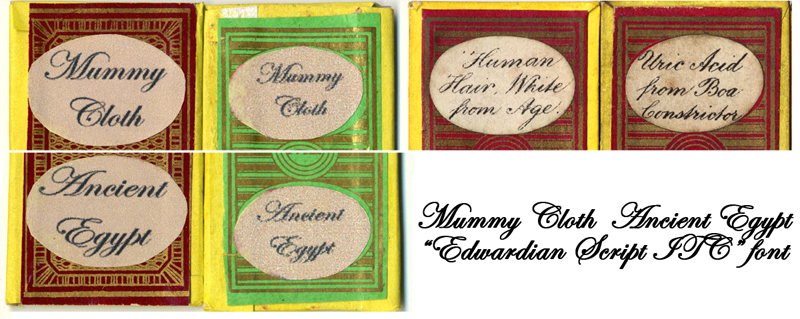Forged “Antique” Microscope Slides - A Lesson for Collectors
by Brian Stevenson
last updated October, 2012
Writing in
1857, Edmund Dixon declared “the
preparer's art is no mere mechanical routine. He must have science to know what
is worth preserving, taste to arrange it gracefully and accurately, and skill
so to embalm his object as to retain its beauty for future admirers. He must
have an artistic eye, a fine touch, an extensive knowledge of Nature's
minutiae, and a hand practised in the manipulation of his business. Hence, it
is no day-dream to predict, that, before long, collections of microscopic
objects will publicly enter the lists with other articles of virtú. Choice
specimens of invisibilities will rise to high fancy prices - especially after
their preparers are dead. As we treasure cabinet-pictures by Teniers or the
Breughels, so shall we set an exalted value on charming bits of still-life from
the studios of Amadio or Stevens, on insect-portraits by Topping, on botanical
groups by Bourgogne the Elder, and on other works
by anonymous artists, whose names, though not their productions, still remain
unknown to fame. We shall have connoisseurs, fanciers, and collectors of
microscopic objects, with all the peculiarities of the genus. Indeed, I might
say we have them already in the adolescent stage of their growth. But, one of
these days, as my readers who live long enough will see, beautiful preparations
by first-rate hands will pass through the same course of destiny as illuminated
missals, majolica earthenware, Benvenuto Cellini carvings, and the like”.
Dixon’s
words have definitely come true. Individual slides sometimes sell for many
thousands of dollars. As with other collectible forms of art, it is not
surprising that our hobby has attracted forgers.
Figure 1A
illustrates two “antique” microscope slides I purchased in 2010. They were
listed on eBay along with a half dozen other slides. My impression prior to the
sale was that these were an interesting Edmund Wheeler slide of ancient mummy
cloth, and a similar preparation that used generic, off-the-shelf wrapping
papers. Upon receipt of the slides, however, comparisons with legitimate
Wheeler preparations (Figure 1B) revealed substantial differences (Figure 2).

Figure 1.
Figure 1.
(A) Two fraudulent “antique” microscope slides. One used
an Edmund Wheeler (EW) cover paper.
(B)
Six legitimate slides made by Edmund Wheeler. The first two and last two used
machine-printed specimen labels. The middle two slides have specimen labels
handwritten by Edmund Wheeler.

Figure 2.
Details of forged and legitimate Wheeler microscope
slides, and computer-generated printing using Edwardian Script ITC font.
Several
differences are apparent when comparing the fraudulent and legitimate Wheeler
slides:
Foremost, the font
used on the forged slides is modern, known as “Edwardian Script ITC”. It is
available on many computer programs, including Microsoft Word and Photoshop.
Try it. Although superficially similar to Wheeler’s handwritten and printed
labels, there are obvious differences.
The edges
of the specimen labels on the forged slides are uneven, and were evidently cut
by hand with scissors. Wheeler’s labels were punched out with a die, and are
perfectly even.
The
papering on the forged slides is very sloppy. Compare the uneven overlaps of
the yellow papers on the forged slides with the professional-quality, mitered
edges of Wheeler’s work.
One of the
problems with collecting antique microscope slides is that almost all purchases
are through the internet, generally eBay. We have to rely upon what is shown in
photographs, and on the reputation of sellers. The seller from whom I purchased
the forgeries is quite reputable, however. Many of us have bought genuine
antiques from that person. I have to assume the seller did not realize what was
being sold. So, caveat emptor. We
buyers must recognize that forged microscope slides are being made and passed
off as legitimate, and look more than twice at the pictures before bidding.

